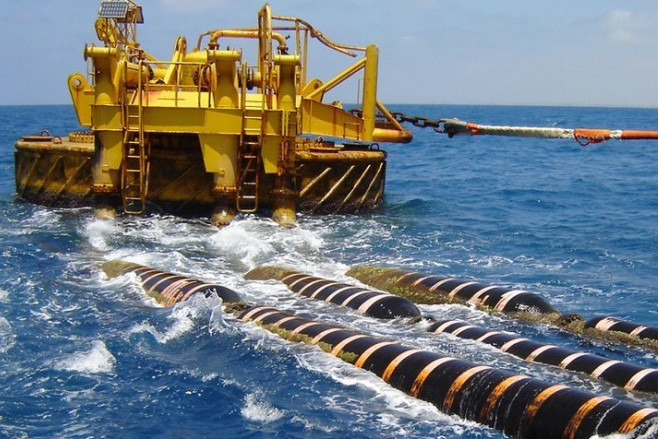
The Asia Pacific Gateway (APG) submarine cable system has been fully repaired, bringing Vietnam's international internet connectivity back to full capacity just in time for the national celebration on April 30. All six submarine cable systems connecting Vietnam to the global internet are now operating normally.
APG, along with four other undersea cables - IA, AAE-1, AAG, and SMW-3 - has been used by Vietnamese internet service providers (ISPs) for years to facilitate international connections. All five cable systems exit eastward via the East Sea, connecting to six landing stations located in Ba Ria - Vung Tau, Quy Nhon, and Da Nang.
APG, which has been in commercial operation for nearly nine years, most recently suffered outages in early February 2025 on two branches: S9 (toward Singapore) and S1.9 (near the Malaysian landing station), with two errors on S1.9 and one on S9.
Speaking to VietNamNet on April 29, a representative from a local ISP confirmed that at around 11:30 PM on April 22, international partners completed power reconfiguration after successfully fixing the issues on both S9 and S1.9 branches. As a result, full international bandwidth on the APG system has been restored.
Just in time for the 50th anniversary of the Liberation of the South and National Reunification on April 30, Vietnam's entire international submarine cable network is now stable, allowing ISPs to maintain high-quality service for users both at home and abroad.
Also in April 2025, the Asia Direct Cable (ADC) - Vietnam’s highest-capacity undersea cable - officially went into operation. Spanning approximately 9,800 km, ADC connects seven countries and territories: Vietnam, China, Hong Kong (China), Thailand, the Philippines, Singapore, and Japan.
Compared to Vietnam’s current undersea cable systems, ADC is unique in that it directly connects to three of Asia’s top internet hubs: Singapore, Hong Kong, and Japan.
With a maximum capacity of 50 Tbps, ADC’s bandwidth equals 125% of the total combined capacity of Vietnam’s existing five active cables (IA, AAE-1, APG, AAG, SMW-3). Additionally, ADC offers faster speeds than previous systems.
The total investment for ADC reached USD 290 million, funded by a consortium of nine telecom giants, with Viettel being the only Vietnamese investor. Viettel owns the entire cable branch connecting Vietnam to the international trunk via the Quy Nhon landing station.
Regarding Vietnam’s overall digital infrastructure goals, Politburo Resolution 57 (dated December 22, 2024) outlines a national strategy for breakthroughs in science, technology, innovation, and digital transformation. It emphasizes building advanced, high-capacity, ultra-broadband digital infrastructure, comparable to that of leading countries. It also calls for the development of secure, resilient telecom and internet networks.
Following up on this directive, Resolution 71 (April 1, 2025) updated the government's action plan for implementing Resolution 57. One key objective is to develop high-speed satellite transmission systems, submarine optical cables, 5G and 6G mobile networks, and nationwide coverage for future mobile generations.
To achieve these digital infrastructure targets, especially regarding international submarine cables, Resolution 193 (dated February 19) by the National Assembly allows for special investment and bidding mechanisms. These will facilitate the development of nine new undersea cable systems between 2025 and 2030, with Vietnamese telecom enterprises either co-investing or serving as lead investors.
“This policy is expected to eliminate procedural bottlenecks in investment and bidding, accelerating the expansion of Vietnam’s international submarine cable network to meet national development goals,” a representative from the drafting committee of Resolution 193 noted.
According to the Department of Telecommunications (Ministry of Information and Communications), as of March 2025, Vietnam's mobile broadband speed reached 150.43 Mbps - 3.04 times higher than March 2024 (49.34 Mbps). Vietnam ranked 18th out of 102 countries, up one spot from February 2025.
Meanwhile, fixed broadband speeds hit 166.99 Mbps, a 1.5-fold increase compared to March 2024 (109.12 Mbps), placing Vietnam 36th out of 154 countries.
Van Anh